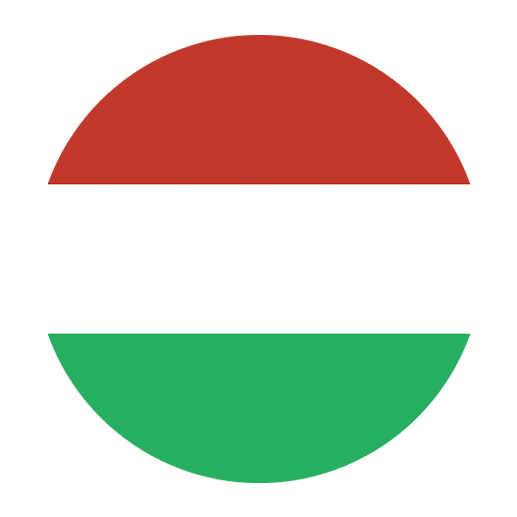The Hungarian language, or “Magyar” as it is called in its native tongue, is a fascinating and unique member of the Uralic language family. Unlike most of its European neighbors, Hungarian is not an Indo-European language, setting it apart in both structure and vocabulary. This article delves into the rich history and evolution of the Hungarian language, exploring its origins, influences, and modern-day usage.
Origins and Early History
The Hungarian language traces its roots back to the Uralic language family, which is believed to have originated in the Ural Mountains region. The Uralic family includes languages such as Finnish, Estonian, and several minority languages spoken in Russia. While the exact timeline is debated among linguists, it is generally accepted that the Proto-Uralic language split into various branches around 6,000 years ago, with the ancestors of the Hungarian people migrating westward.
By the early first millennium AD, the ancestors of the Hungarians, known as the Magyars, were nomadic tribes living in the steppes of Central Asia. Their language, Proto-Hungarian, evolved in this period, absorbing elements from Turkic and Iranian languages due to interactions with neighboring tribes. This period also saw the development of the basic grammatical structure that characterizes modern Hungarian, such as its agglutinative nature, which involves the use of various suffixes to modify words.
The Hungarian Conquest
In the late 9th century, the Magyars migrated westward and settled in the Carpathian Basin, an area that roughly corresponds to present-day Hungary. This event, known as the Hungarian Conquest or “Honfoglalás,” marked a significant turning point in the history of the Hungarian language. As the Magyars established their new homeland, their language began to absorb influences from the Slavic languages spoken by the peoples they encountered in the region. These interactions enriched the Hungarian vocabulary with new words related to agriculture, governance, and daily life.
Medieval and Renaissance Periods
The establishment of the Kingdom of Hungary in 1000 AD under King Stephen I marked the beginning of a new era for the Hungarian language. During this period, Latin became the official language of administration, education, and religion, exerting a profound influence on Hungarian. Many Latin loanwords entered the Hungarian lexicon, particularly in fields such as law, religion, and science.
Codification and Early Literature
The first written records of the Hungarian language date back to the 12th century. The earliest extant text is the “Funeral Sermon and Prayer” (Halotti beszéd és könyörgés), written around 1192-1195. This sermon, along with other early texts, provides valuable insights into the medieval Hungarian language and its development.
The Renaissance period brought about a renewed interest in literature and the arts, which also influenced the Hungarian language. The works of Hungarian poets and writers, such as Janus Pannonius and Bálint Balassi, contributed to the enrichment and standardization of the language. These literary figures played a crucial role in shaping the Hungarian literary tradition and promoting the use of the vernacular.
Language Reforms and the 19th Century
The 19th century was a pivotal period in the history of the Hungarian language, marked by significant language reforms and the rise of national consciousness. The Hungarian language faced challenges from the dominant use of Latin and German in official and educational contexts. In response, a group of Hungarian intellectuals and linguists embarked on a mission to modernize and standardize the language.
The Language Reform Movement
The language reform movement, led by figures such as Ferenc Kazinczy and Pál Bugát, aimed to purify and enrich the Hungarian language. These reformers sought to eliminate foreign loanwords and revive archaic Hungarian words, as well as create new terms to express modern concepts. Their efforts led to the publication of dictionaries, grammars, and other linguistic works that codified the rules and vocabulary of Hungarian.
One of the most significant achievements of the language reform movement was the establishment of a standardized orthography. The introduction of a consistent spelling system helped to unify the written language and facilitate communication across different regions of Hungary.
National Awakening
The 19th century also witnessed the rise of Hungarian nationalism, which further fueled the desire to promote and preserve the Hungarian language. The Hungarian Revolution of 1848, led by figures such as Lajos Kossuth and Sándor Petőfi, emphasized the importance of the Hungarian language as a symbol of national identity and independence. The revolutionary movement called for the use of Hungarian in government, education, and public life, challenging the dominance of Latin and German.
Modern Era and Contemporary Hungarian
The 20th century brought about significant social, political, and technological changes that impacted the Hungarian language. The two World Wars, the Treaty of Trianon, and the subsequent shifts in Hungary’s borders had a profound effect on the linguistic landscape of the region.
The Impact of Trianon
The Treaty of Trianon, signed in 1920, resulted in the dismemberment of the Kingdom of Hungary and the loss of large territories to neighboring countries. As a consequence, millions of ethnic Hungarians found themselves living outside the newly established borders of Hungary, in regions such as Transylvania (Romania), Slovakia, and Vojvodina (Serbia). This geopolitical shift led to the emergence of Hungarian-speaking communities in these countries, each developing their own regional dialects and linguistic characteristics.
The Influence of Technology and Media
The advent of radio, television, and the internet has had a profound impact on the Hungarian language. Mass media and digital communication have facilitated the spread of standardized Hungarian, while also introducing new words and expressions. The influence of English, particularly in the fields of technology and entertainment, has led to the incorporation of numerous English loanwords into Hungarian.
Grammatical Features and Unique Characteristics
Hungarian is known for its distinctive grammatical features and unique characteristics, which set it apart from most European languages. Understanding these features can provide valuable insights into the structure and evolution of the language.
Agglutination
One of the most notable features of Hungarian is its agglutinative nature. In Hungarian, words are formed by attaching various suffixes to a root word, each suffix adding a specific grammatical meaning. For example, the word “ház” (house) can be modified to express different meanings:
– ház (house)
– házak (houses)
– házban (in the house)
– házakban (in the houses)
– házam (my house)
– házaimban (in my houses)
This agglutinative structure allows for a high degree of precision and flexibility in expressing complex ideas.
Vowel Harmony
Another distinctive feature of Hungarian is vowel harmony, a phonological process that affects the choice of suffixes. Vowel harmony requires that vowels within a word harmonize to be either front or back vowels. For instance, if the root word contains back vowels (a, o, u), the suffixes must also contain back vowels. Conversely, if the root word contains front vowels (e, i, ö, ü), the suffixes must contain front vowels. This feature contributes to the phonetic coherence and fluidity of the language.
Case System
Hungarian employs a rich system of grammatical cases to indicate the roles of nouns and pronouns within a sentence. There are 18 cases in total, each marked by a specific suffix. Some of the most commonly used cases include:
– Nominative (subject): ház (house)
– Accusative (direct object): házat (house)
– Dative (indirect object): háznak (to the house)
– Locative (location): házban (in the house)
– Instrumental (means): házzal (with the house)
These cases provide important grammatical information and allow for flexible word order in sentences.
Dialects and Regional Variations
Despite the standardization efforts of the 19th and 20th centuries, Hungarian exhibits a variety of regional dialects and variations. These dialects reflect the historical, geographical, and social diversity of the Hungarian-speaking population.
Transylvanian Dialects
One of the most prominent regional dialects is the Transylvanian dialect, spoken by the Hungarian minority in Romania. This dialect is characterized by unique phonetic and lexical features, influenced by centuries of coexistence with Romanian speakers. For example, the Transylvanian dialect often retains archaic Hungarian words and expressions that have disappeared from the standard language.
Western and Eastern Dialects
Within Hungary, there are also distinct western and eastern dialects. The western dialects, spoken in regions such as Transdanubia, exhibit features influenced by German and Slovak languages. In contrast, the eastern dialects, found in areas like the Great Hungarian Plain, show influences from Slavic and Romanian languages.
Urban and Rural Variations
Urbanization and migration have also contributed to linguistic variation. In major cities like Budapest, a more standardized form of Hungarian is prevalent, influenced by education and media. However, rural areas often preserve local dialects and traditional speech patterns.
The Role of Hungarian in Education and Culture
The Hungarian language plays a central role in education, culture, and national identity. The promotion and preservation of the language have been key priorities for successive Hungarian governments and cultural institutions.
Education
Hungarian is the primary language of instruction in schools and universities across Hungary. The education system places a strong emphasis on linguistic competence, ensuring that students are proficient in both spoken and written Hungarian. Literature, history, and language arts are integral components of the curriculum, fostering an appreciation for the Hungarian literary and cultural heritage.
Literature and the Arts
Hungarian literature boasts a rich and diverse tradition, with contributions from renowned poets, novelists, and playwrights. Classic works by authors such as Mór Jókai, Sándor Márai, and Magda Szabó continue to be celebrated and studied. Contemporary Hungarian literature also enjoys a vibrant presence, with writers like Péter Esterházy and László Krasznahorkai gaining international recognition.
The Hungarian language is also a vital medium for the arts, including theater, film, and music. Hungarian cinema has produced acclaimed directors such as István Szabó and Béla Tarr, whose works often explore themes of history, identity, and social change. Hungarian folk music and dance traditions are preserved and celebrated through festivals and cultural events.
The Future of the Hungarian Language
The Hungarian language continues to evolve in response to social, technological, and global changes. The increasing influence of English, especially in scientific and technological fields, presents both opportunities and challenges for the Hungarian language.
Language Preservation and Revitalization
Efforts to preserve and revitalize the Hungarian language are ongoing. Language academies, cultural organizations, and educational institutions play a crucial role in promoting linguistic diversity and ensuring the continued vitality of Hungarian. Initiatives such as language camps, literary festivals, and online resources contribute to the preservation and transmission of the language to future generations.
Globalization and Multilingualism
In an increasingly globalized world, multilingualism is becoming more common. Many Hungarians are proficient in multiple languages, including English, German, and French. This linguistic diversity enhances cross-cultural communication and enriches the Hungarian language with new expressions and perspectives.
Conclusion
The history and evolution of the Hungarian language are marked by a series of dynamic and transformative phases, from its ancient Uralic roots to its modern-day usage. The unique characteristics, grammatical features, and rich cultural heritage of Hungarian make it a fascinating subject of study for linguists and language enthusiasts alike. As the Hungarian language continues to adapt and evolve, it remains a vital and enduring symbol of national identity and cultural pride for the Hungarian people.

